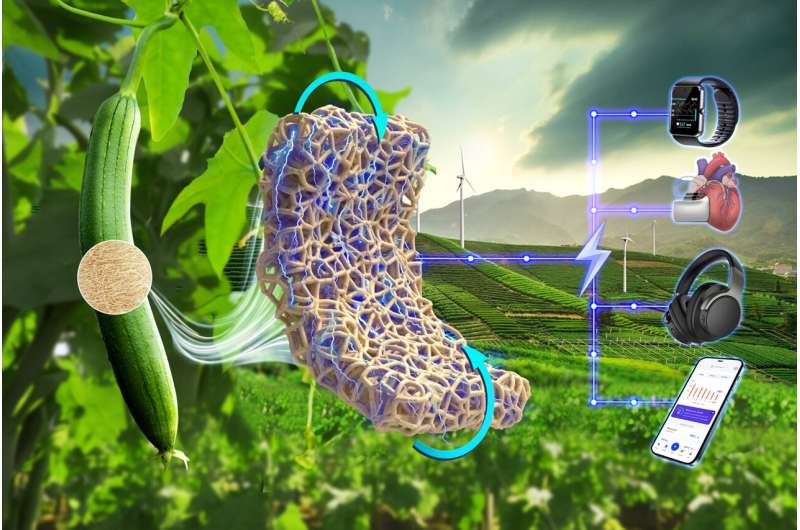
A team of mechanical engineers at Beihang University, Peking University and the University of Houston has found that it is possible to capture small amounts of electricity by repeatedly squeezing treated luffa sponges. In their study, reported in Proceedings of the National Academy of Sciences, the group treated sample luffa sponges and measured the electricity they generated when repeatedly squeezed.
Prior research has shown that applying force or stress to certain materials can result in an accumulation of a piezoelectric charge. Prior research has also shown that repeatedly applying and releasing the force or stress can result in the production of a flow of piezoelectricity.
Over the past several years, engineers have investigated the possibility of generating small amounts of piezoelectricity by taking advantage of footsteps, for example, or the movement of clothes as a person walks. Electricity generated and collected in such ways is seen as a possible way to charge personal devices. In this new effort, the research team looked into use of a new kind of material to generate piezoelectricity—luffa sponges.
Luffa sponges are porous shells that are left behind when the fruit of a luffa plant is left to dry. They have been prepared and sold as a commercial product, mainly as a tool for removing dead skin from the body while in the shower. In this new effort, the researchers looked at luffa as a possible tool for generating small amounts of electricity.
They first treated them with chemicals to remove hemicellulose and lignin, leaving behind a cellulose crystal shell. Then, they connected the results to an electrical circuit and began squeezing them over and over by hand. The research team found they were able to generate up to 8 nanoamps of electricity.
They acknowledge that the amount of electricity generated is so small that it likely would not be of much use, but they also suggest that artificially created luffa sponges could be created that would be more efficient. They could also be made a lot bigger to generate useable amounts of electricity.